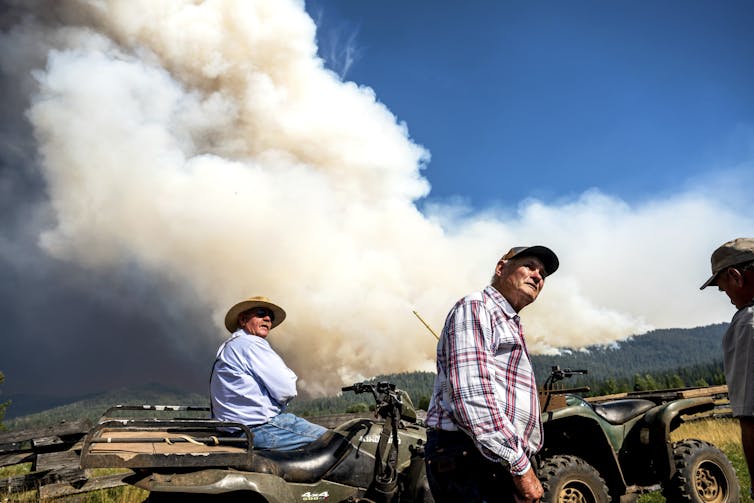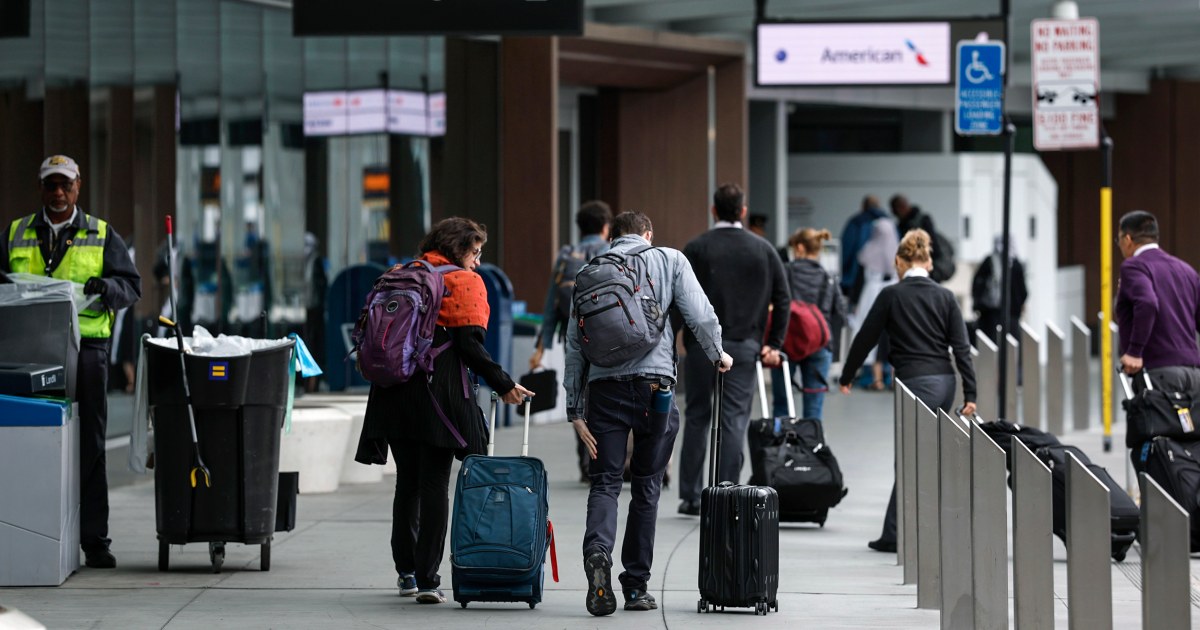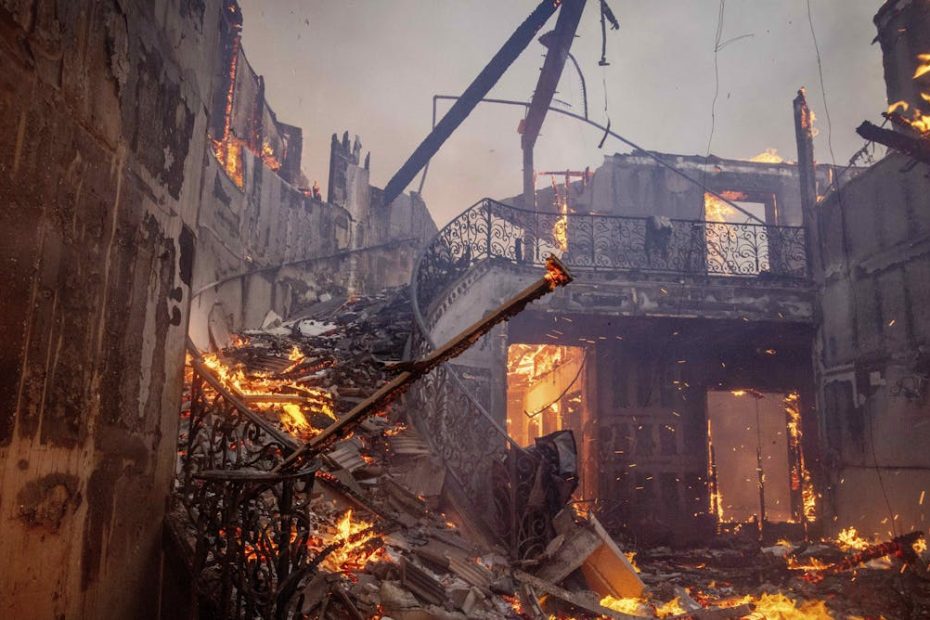Why rapid wildfires and those caused by human activities are more destructive and harder to contain
Investigators are trying to determine the cause of several wind-driven wildfires in January 2025 that destroyed thousands of homes in the Los Angeles area. Given the location of the fire and the lack of lightning at the time, utility infrastructure, other equipment or facilities may have been affected. Human activities are involved.
Wildfires in California have become increasingly destructive in recent years. Research by my colleagues and I shows that U.S. wildfires are up to four times larger and three times more frequent than they were in the 1980s and 1990s. Fast-moving fires are particularly destructive, with 78% of buildings destroyed between 2001 and 2020 and 61% of firefighting costs caused by fast-moving fires.
Lightning strikes are a common cause of wildfires in the United States, but most wildfires that threaten communities are caused by human activity.
A broken power line sparked a deadly Maui fire in 2023 that destroyed the Hawaiian town of Lahaina. Fires can start from metal dragged on the ground by cars or lawn mowers. A man pushed a burning car into a canyon near Chico, sparking California's largest fire of 2024. The fire destroyed more than 700 homes and buildings.
What makes these wildfires so destructive and difficult to contain?
The answer lies in a combination of wind speeds, climate change, the legacy of past land management practices and current human activities that are reshaping fire behavior and increasing the risks they pose.
perfect storm of fire
The spread of wildfires relies on three key elements: favorable weather, dry fuels and a source of fire. Each of these factors has changed significantly in recent decades. While climate change sets the stage for bigger, more intense fires, humans are actively fanning the flames.
climate and weather
Extreme temperatures play a dangerous role in wildfires. Heat can dry out vegetation, making it more flammable. Under these conditions, wildfires ignite more easily, spread faster, and burn more intensely. In the American West, droughts caused by climate change have doubled the amount of forestland burned since 1984.
Compounding the problem is the rapid rise in nighttime temperatures, which are now rising faster than daytime temperatures. Cooler nights with higher humidity used to provide respite, but those are becoming increasingly rare, allowing fires to continue to rage.
Finally, wind can cause wildfires to spread rapidly, increase in intensity, and behave erratically. Gusty winds push heat and embers toward the fire front, causing the fire to spread quickly. They can also create localized fires in new locations. Additionally, wind enhances combustion by providing more oxygen, which can make fires more unpredictable and difficult to control. Fast-moving fires, often driven by high winds, have become more frequent in recent decades.

AP Photo/Noah Berger
fuel
Fire is a natural process that has shaped ecosystems for 420 million years. Indigenous peoples have historically used controlled burning to manage landscapes and reduce fuel accumulation. However, after a century of fire suppression, large areas have accumulated dense fuel, setting the stage for larger, more intense wildfires.
Invasive species, such as certain grasses, exacerbate the problem by creating continuous fuel beds that accelerate fire spread, often doubling or tripling fire activity.
Additionally, human development in fire-prone areas, particularly at the wildland-urban interface where communities mingle with forest and prairie vegetation, has introduced new, highly flammable fuels. Buildings, vehicles and infrastructure often catch fire easily and burn hotter and faster than natural vegetation. These changes dramatically alter fuel patterns, creating favorable conditions for more severe and difficult-to-control wildfires.
ignition
Lightning can spark wildfires, but humans are responsible for an increasing proportion of the fires. From unattended campfires to arson or sparks from power lines, more than 84% of wildfires affecting communities are started by humans.
Human activity has not only tripled the length of the fire season, but it has also caused fires to pose a higher risk to people.

AP Photo/Eugene Garcia
Fires started by lightning often coincide with storms that bring rain or higher humidity, which slows the spread of fires. However, human-caused fires often ignite under more extreme conditions—higher temperatures, lower humidity and stronger winds. This results in higher flame heights, faster spread in the critical early stages before crews can respond, and more severe ecosystem impacts such as killing more trees and degrading soils.
Human-caused fires often occur in or near densely populated areas, where flammable buildings and vegetation create more dangerous conditions. Materials in and around your home, such as wooden fences and porches, can burn quickly and carry burning embers into the air, further spreading the flames.
As urban development expands into wildlands, the potential for man-made fires and the properties that may be exposed to fires increase, creating a feedback loop of escalating wildfire risk.
whipping weather
In recent years, a phenomenon known as whiplash weather has been particularly pronounced in Southern California, characterized by unusually wet winters and springs followed by sweltering summers.
A wet spring in 2024 encouraged the growth of vegetation, which then dried under hot summer temperatures and turned into highly flammable fuel. This cycle is responsible for some of the largest fires of the 2024 season, several of which were started by humans.
The drought in Southern California lasted through the fall and early winter, with little rainfall. Soil moisture in the Los Angeles area is about 2% of its historical level on January 7, 2025, when the fire broke out.
As the factors that trigger wildfires converge, the likelihood of increasingly severe wildfires becomes greater. Severe fires also release large amounts of carbon from trees, vegetation and soil into the atmosphere, increasing greenhouse gas emissions and exacerbating climate change, leading to more extreme fire seasons.
This is an update to an article originally published on October 8, 2024.










